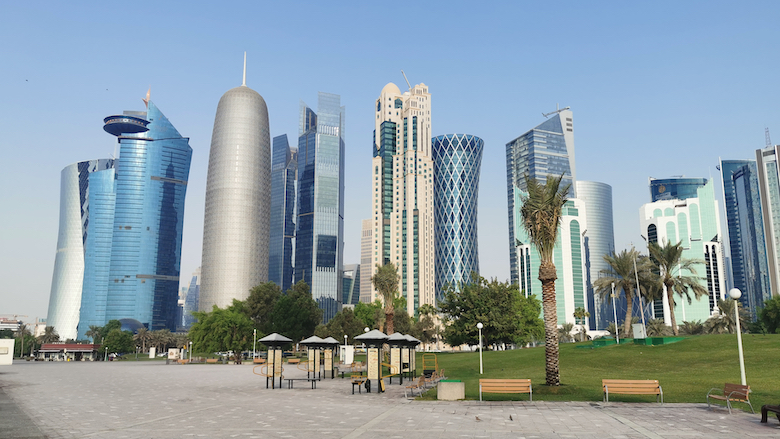Qatar, the world’s fifth-largest gas producer, second-largest gas exporter, and largest LNG exporter, has seen tepid growth throughout 2019. This reflects sluggishness in the hydrocarbon (HC) and non-HC sectors. The HC sector has reflected production restraint and phasing of new projects, while the non-HC sector reflects a gradual winding down of a decade-long boom associated with the implementation of large infrastructure projects in preparation for the FIFA 2022 World Cup.
Growth is projected to stall in 2020 even with increased government spending to ease the economic impact of COVID-19 containment, and to rise towards 3% in the medium term driven by stronger activity in the service sector as the FIFA World Cup 2022 underpins a V-shaped recovery. Under the Qatar National Vision 2030, nearly QR60bn (US$16.4 billion) in infrastructure and real estate investments are planned over the next four years to help offset falling FIFA-investment spending and ensure a beneficial legacy. While envisaging large-scale LNG capacity expansion plans, which should increase gas liquefaction capacity by more than a third, exploitation of the North Field will be further delayed given adverse developments in gas prices.
Major external risks are materializing. Although Qatar is protected from spot oil price volatility through LNG long-term contracts, natural gas prices overall were already weak prior to the OPEC+ and COVID-19 shocks due to the mild winter in major markets and the overhang of previously isolated US gas supply coming onto the global market. The crash in hydrocarbon prices will lead to a renewed pressure on LNG pricing and volumes and deterioration in fiscal and external balances, particularly if government spending continues to rise over the medium term. Qatar’s low-cost dominance in LNG export markets is threatened by new and emerging producers, notably Australia, the USA, and over the coming years, Egypt and Mozambique.
